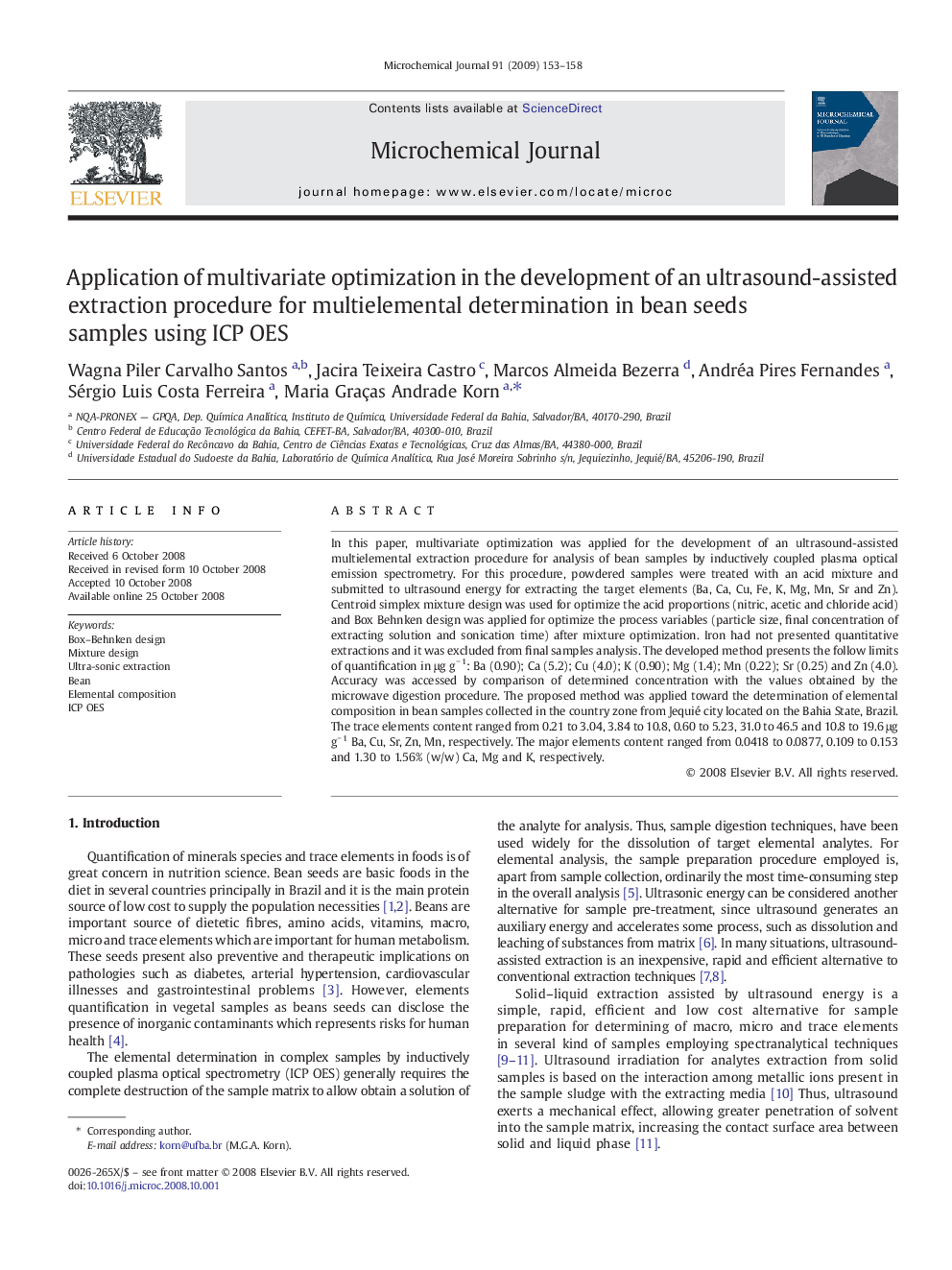| Article ID | Journal | Published Year | Pages | File Type |
|---|---|---|---|---|
| 1228153 | Microchemical Journal | 2009 | 6 Pages |
In this paper, multivariate optimization was applied for the development of an ultrasound-assisted multielemental extraction procedure for analysis of bean samples by inductively coupled plasma optical emission spectrometry. For this procedure, powdered samples were treated with an acid mixture and submitted to ultrasound energy for extracting the target elements (Ba, Ca, Cu, Fe, K, Mg, Mn, Sr and Zn). Centroid simplex mixture design was used for optimize the acid proportions (nitric, acetic and chloride acid) and Box Behnken design was applied for optimize the process variables (particle size, final concentration of extracting solution and sonication time) after mixture optimization. Iron had not presented quantitative extractions and it was excluded from final samples analysis. The developed method presents the follow limits of quantification in μg g− 1: Ba (0.90); Ca (5.2); Cu (4.0); K (0.90); Mg (1.4); Mn (0.22); Sr (0.25) and Zn (4.0). Accuracy was accessed by comparison of determined concentration with the values obtained by the microwave digestion procedure. The proposed method was applied toward the determination of elemental composition in bean samples collected in the country zone from Jequié city located on the Bahia State, Brazil. The trace elements content ranged from 0.21 to 3.04, 3.84 to 10.8, 0.60 to 5.23, 31.0 to 46.5 and 10.8 to 19.6 μg g− 1 Ba, Cu, Sr, Zn, Mn, respectively. The major elements content ranged from 0.0418 to 0.0877, 0.109 to 0.153 and 1.30 to 1.56% (w/w) Ca, Mg and K, respectively.
